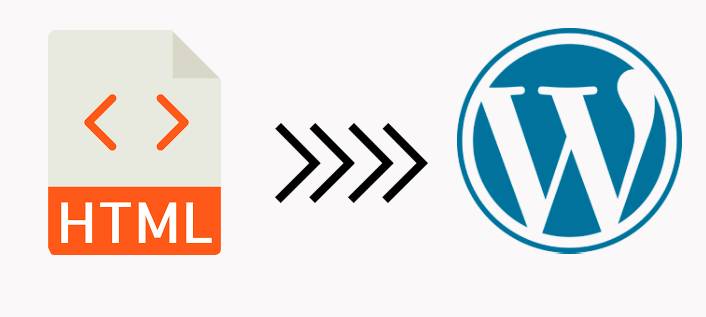Our Blog
Effortless conversion of HTML to WordPress with Generalization

Gone are the days when websites featuring only texts and static HTML used to flood the internet. Following the entry of WordPress websites, the internet seems to be a distinct domain altogether. Websites have become more visually appealing and functional with advanced functionalities – thanks to WordPress. While most new websites feature WordPress, a number of websites are transitioning from HTML to WordPress.
This post will cover the steps involved in the process of transitioning an HTML website to a WordPress site.
Steps to convert an HTML website to WordPress
If you are looking to do the same with your website, then here are the steps you need to follow.
1.Have a technical drawing of the appearance of your website in the future
While there is no denying the fact that you will try your best to pull off the transition of our HTML website to WordPress with generalization, the fact remains that you may not be sure about the outcome. So, it is a good idea to ensure you have a blueprint of how you want your website to look like at the subsequent stages.
One of the major benefits of doing it is that you will be able to better strategize the appearance of the design and layout of your website. Plus, it will also allow you to plan a number of other aspects such as the business lines, testing, hosting the files of the new website, and a number of other allied aspects.
2. Select a WordPress theme to give your website a distinctive appearance
Choosing a WordPress theme is no big deal at the present time. You can either choose to go with a theme that is free or else, you can also opt for premium themes. It is important to choose your pick carefully.
Additionally, you can also choose to create your own customized theme if you know how to use various programming languages.
3. Install WordPress
Before proceeding with this step, you need to decide on a hosting package. On the internet, you will come across a number of providers. Make sure you align your preferences well to come up with the best choice. Do your research before making your final call on the matter. Your idea should be to choose something which not only fulfills your demands in terms of features but also in terms of budget.
Next, you can install WordPress by signing into your hosting account with the credentials followed by logging into the CPanel linked to it. You will see some simple on-screen instructions that you need to follow to conclude the process successfully.
Thereafter, create the following files:
Style.css
Index.php
header.php
sidebar.php
footer.php
Refer to the Stylesheet below and copy the current CSS
/*
Theme Name: Replace with your Theme’s name.
Theme URI: Your Theme’s URI
Description: A brief description.
Version: 1.0
Author: You
Author URI: Your website address.
*/
Follow these codes while creating the files. Once you are done with the process, save each file before canceling it out.
4. Load the combination of your fresh content and theme
Following the successful installation of WordPress, it is essential to conceal it from the engine bots and site visitors as both may not be aware of the development status of your website. Once you ensure it, you can proceed with the installation of WordPress content and theme.
You will find a wealth of information on the internet to transition an HTML website to an HTML website. You can either refer to one of the reliable sources on the internet or you can use your own knowledge if you know how to do conduct the process successfully. Follow whichever process suits you the best to activate your newly uploaded theme. Additionally, you can also make use of WordPress plugins that are available on the internet.
5. Check all the functionalities of your website before launching it
Now that you have already done the bulk of your hard work, the only thing left is putting the finishing touches. You can do it with finesse by making sure all is well with the new website which you wish to launch on the internet. Review all the features and functionalities of your new website and make sure they are in line with the qualitative requirements.
After this step, you are ready to go ahead with the process of going live with your website. To make sure you have got rid of all the existing UI/UX issues, issues with navigation and 404 pages, and problems in loading the website, run a check at least two times.
If all is well, then your brand new WordPress website has got all the facelift and now it is ready to go live. Go ahead and launch it with a confident smile on your face.
Final thoughts
Nowadays, there is a vogue for WordPress websites as the fundamentally all-inclusive HTML websites are losing ground. As such webmasters who were operating the latter are looking for ways to convert website to WordPress. Put the aforementioned steps into practice and you will be able to accomplish the task in a simple and hassle-free way.